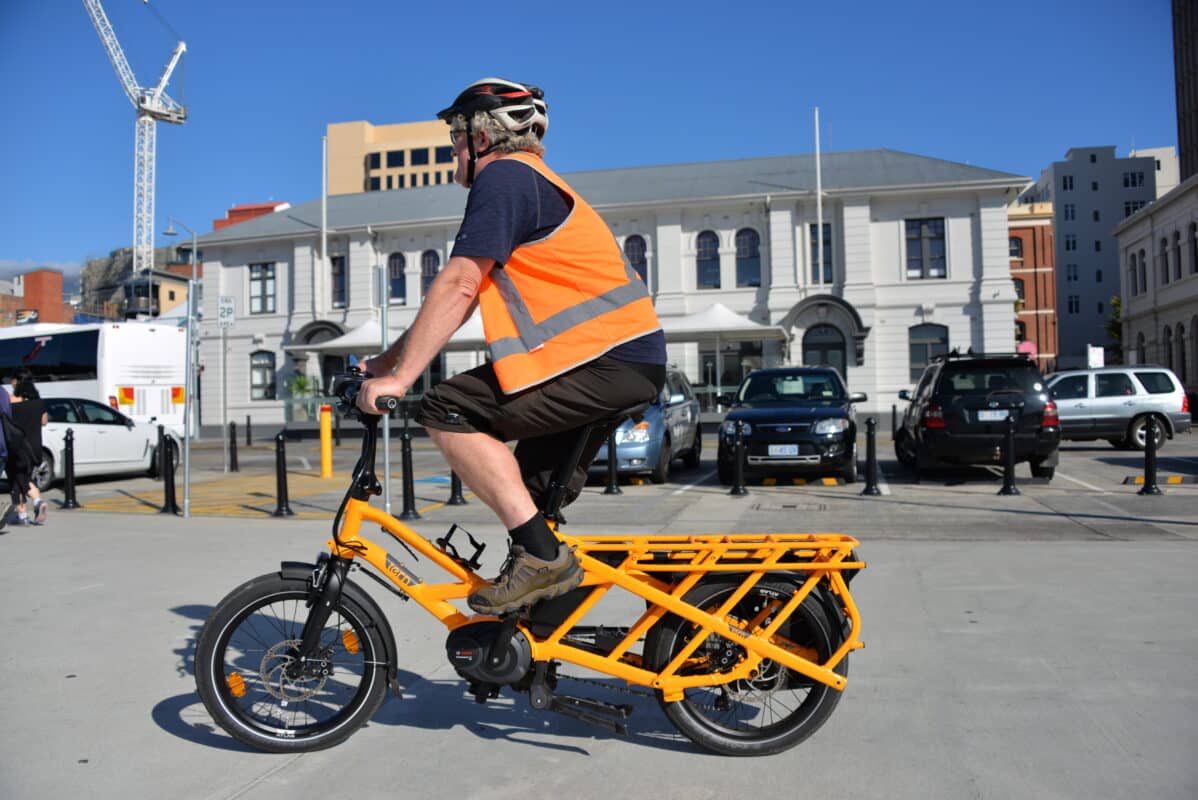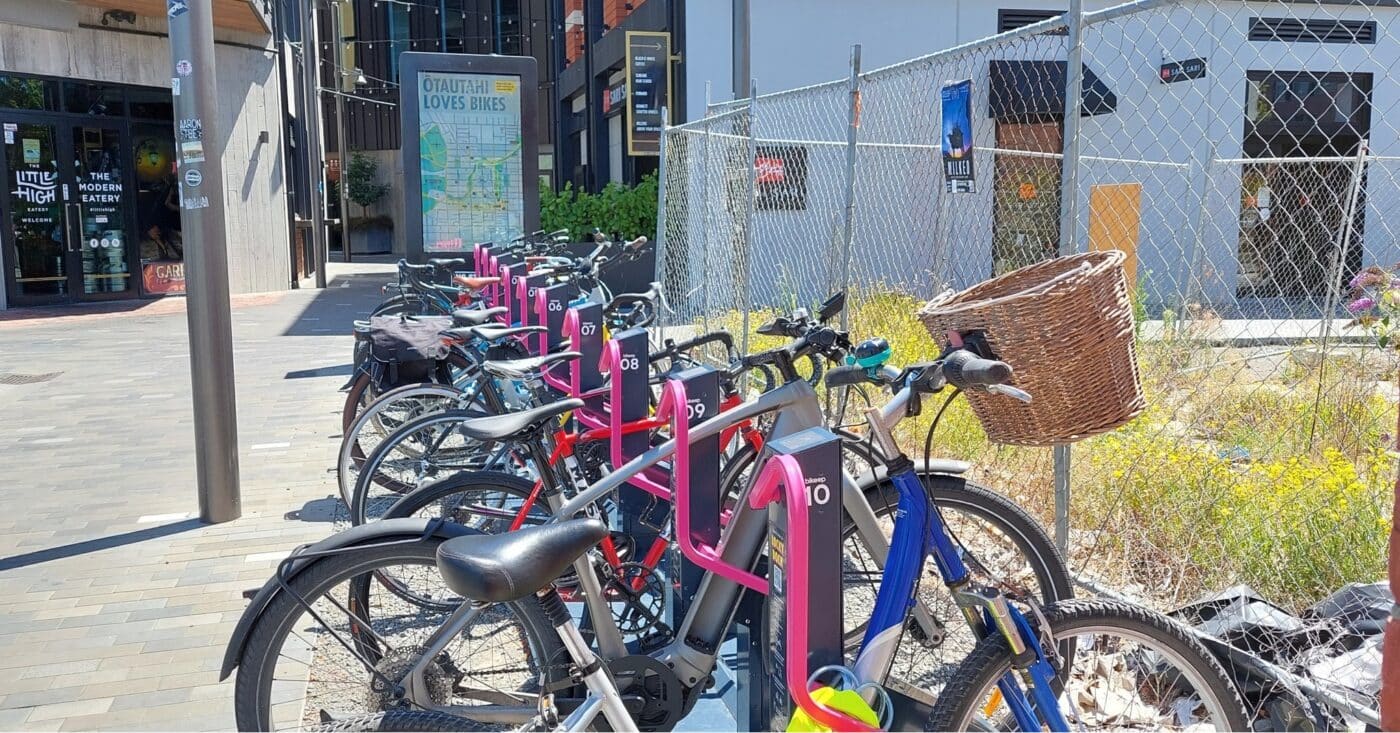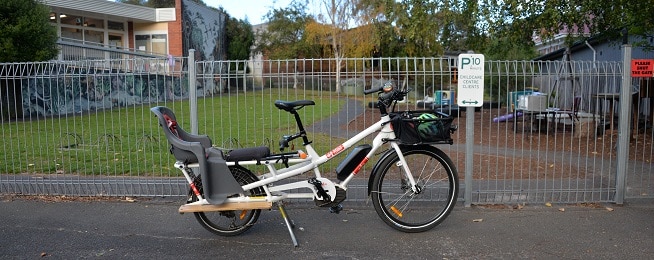The Tasmanian Government has released its long overdue draft Climate Action Plan, but the thrust of the plan for the transport sector is for more planning rather than immediate action.
The last Climate Action Plan covered 2017–21 and public consultation was held in 2021 to review it and prepare for the next plan, with transport coming out on top as the most raised issue by participants.
The 2017 plan focussed solely on light and heavy vehicles, with money directed to a charger network, fleet energy efficiency and an electric vehicle working group that doesn't include bicycles, and nothing going to active or public transport.
Since that plan was released Metro has received funding for a trial of electric and hydrogen buses and the government has waived stamp duty on the purchase of electric vehicles, but no incentive to buy electric bicycles has been introduced.
The new draft Climate Action Plan 2023–25 covers what the government will do to prepare for its next full five-year plan starting in 2025, including preparing plans for the main greenhouse gas emitting sectors, which includes transport.
The draft plan identifies increasing active and public transport as one of three pathways the government should pursue to reduce transport emissions, along with reducing emissions from private cars and the state’s truck fleet.
The timeline in the draft plan has the government developing a transport-related Emissions Reduction and Resilience Plan plan by November this year.
Transport emissions reduction plan
It would be sensible for the government to develop a transport emissions reduction plan that includes electric bicycles as part of the solution.

Research locally and overseas shows that electric bicycles can get people out of cars, rather than just switching from another low-carbon transport mode like walking or public transport.
In terms of sustainability and efficiency, it makes sense to encourage people on to electric bikes now for shorter trips with a switch to electric/hydrogen cars for longer trips.
Many climate plans continue business-as-usual by just concentrating on switching petrol cars to electric when they could be encouraging more efficient transport choices as part of the change.
Plan options
Other countries understand the need to encourage more people on to electric bikes and governments have come up with a variety of schemes to do so:
- Anti-theft bike parking
We know that separated infrastructure is the biggest incentive to get people riding for transport, but with e-bikes there is also the worry of theft.
In the past few years more places have rolled out electronic anti-theft bike parking that can also charge e-bikes via parking docks or within bike lockers. These are operated by a dedicated card or phone app and are another option to communal bike cages such as those at train stations in other states and which have been installed at Park and Ride hubs in Hobart (albeit without any security layer).

- Try before you buy
People who have never tried an e-bike don’t always understand their potential as a transport option, which is why bike libraries could be supported.
These schemes can be operated by local governments or community organisations with bike shops and operate by people leaving a deposit or other forms of security to take a regular or cargo e-bike for 1–2 weeks to see how it could fit into their lives.
- Assistance to buy
The Tasmanian Government could offer a no-interest loan, similar to the Tasmanian Energy Efficiency Loans, or direct grants to help Tasmanians buy an e-bike for transport.
Helping people delay payment of the purchase price gives them time to save money they would have spent on petrol and parking and see the worth of an e-bike over a car.
Alternatively, direct subsidies for people who can’t afford to buy an e-bike is an option that has been used successfully overseas. These programs come in different forms depending in the needs of the government, including handing in a registration plate to get a subsidy, being in a designated income bracket and cargo bike subsidies for individuals and businesses.
- Salary Sacrificing
Offering employees e-bike salary sacrificing can operate like a loan scheme, once people have used a bike on lease and found it useful, they may be more tempted to buy their own or just keep leasing.
- Long-term rental
Encouraging some of the private leasing businesses to Tasmania would provide more options to people wanting to try before they buy. These usually operate by providing weekly/monthly lease agreements for a fully maintained bike.
Make a submission
Comment is being accepted until 6 April 2023 or you can attend an online workshop:
- Wednesday 22 March 2023, 10:00 am
- Monday 27 March 2023, 6:30 pm
- Wednesday 29 March 2023, 2:00 pm
For more information and to download the plan visit Renewables, Climate and Future Industries Tasmania website.


